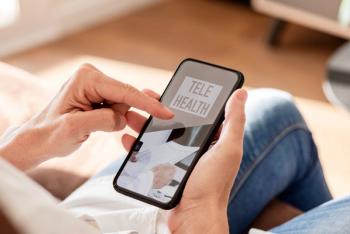
Telehealth popular outside integrated care models
Programs risk losing patients to organizations offering telehealth services.
According to a news release by the American Medical Association, results from a
“These customer satisfaction scores are among the highest of the healthcare industry,” says J.D. Power in their official release.
Figure 1 shows the
Trending:
There are hundreds of different types of Integrated Care Models, such as Patient-Centered Medical Homes (PCMH), Integrated Primary Behavioral Care (IPBC), or the many VBP models, to name a few. These reports on increasing patient satisfaction and utilization growth by providers should be raising red flags across the board. According to the
Telehealth Reports Reveal Patients Are Not Going To PCMH, Integrated Care, or VBP Programs
Initially, when the Centers for Medicare & Medicaid Services was designing what are now hundreds of different PCMH, Integrated Care, and VBP programs, they were either focused on primary care, mental health, or a combination of both. Thus, all PCMHs have two goals in mind:
- Improve healthcare as a whole
- Design different payment options that allow clinicians to choose based on their practice needs and, at the same time, improve better patient care.
The surge of Telehealth for healthcare services in urgent care and retail clinics essentially means that both the PCP and Behavior Health organizations are seeing their patients opting to see providers not affiliated with their system. Similarly, the JD Power reports reveal that their patients are extremely satisfied to seek healthcare with other providers.
Integrating telehealth services
Many in healthcare do not recognize the value and broad ways that telehealth improves PCMH, Integrated, or VBP-based programs. For relatively little cost, telehealth provides dramatically positive results. One of the greatest examples of Telehealth’s ability to enhance a program's effectiveness is it’s application to an Integrated Care program treating substance abuse illness (specifically opioid treatment).
Medication-Assisted Treatment (MAT) for those suffering from Opioid addiction involves multiple types of organizations to achieve success.
Read More:
With Telehealth, all of the providers types listed in Figure 2 can use telehealth services to deliver healthcare to the patient. Examples of how Telehealth could be utilized include:
- Provider-to-Patient – Provider is located at their office/facility and patient at home
- Provider-to-Provider – Provider Consultations with another Provider
- Provider-to-Patient in an Inpatient/Facility setting – Provider treats the patient that is in an inpatient/outpatient setting.
To further demonstrate how many providers can supplement the delivery of care to their patients with telemedicine, figure 3 only includes situations where the provider is onsite and interacting with the patient (red icons).
Every provider category highlighted in blue can see a patient for many services while at their office and the patient is located home.
Beyond the vast number and variety of providers that are part of the continuum of care for addiction treatment, retail clinics, or Urgent Care are not do not provide such treatment. Yes, one could validly point out that Urgent Care and Retail Clinic utilization helps to reduce emergency room visits, but the treatment of a chronic condition like substance abuse requires high touch services and engagement with the patient. A lot of the patient engagement can be supplemented with a Telehealth program. Also, referring back to the
Newsletter
Optimize your practice with the Physicians Practice newsletter, offering management pearls, leadership tips, and business strategies tailored for practice administrators and physicians of any specialty.









